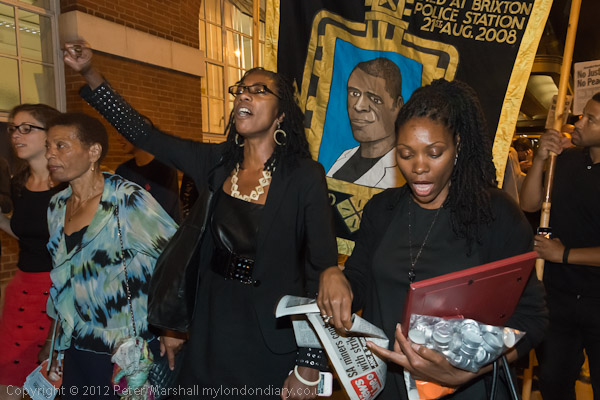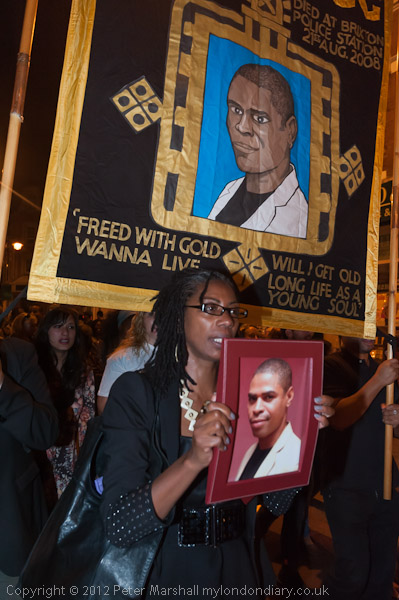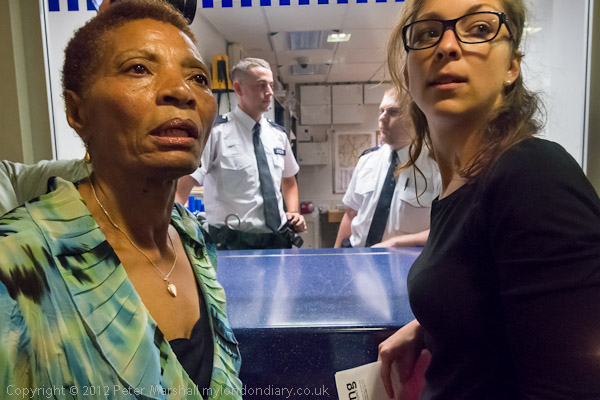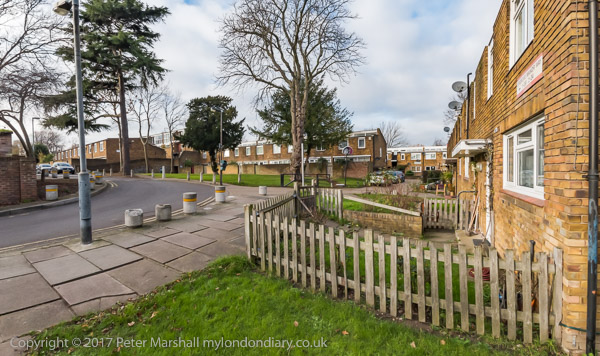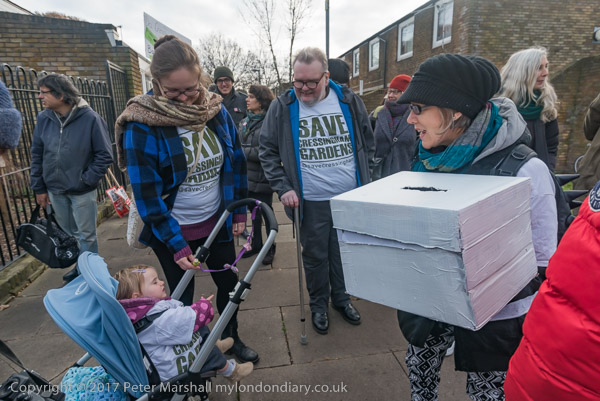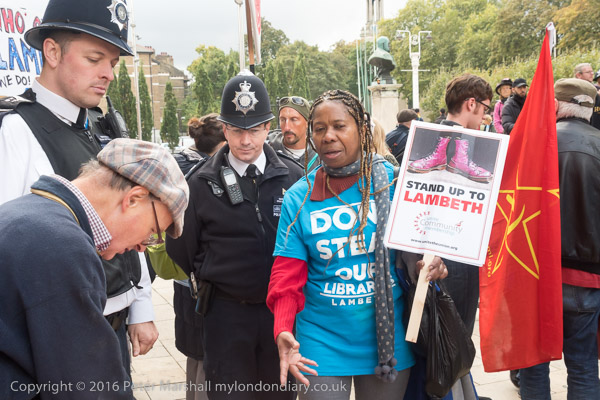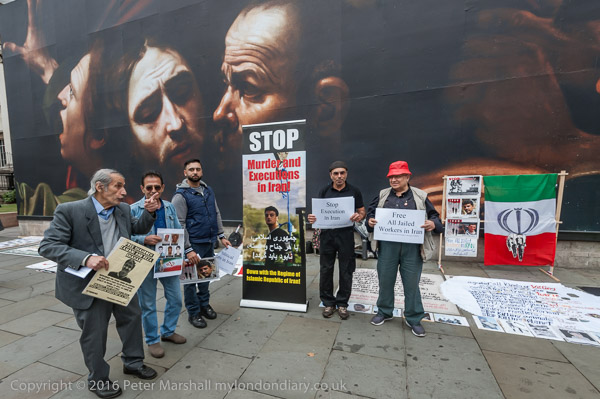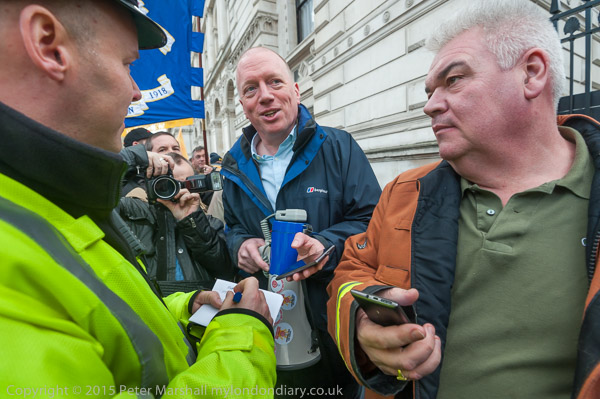Lambeth Protests Massive Council Cuts: it was already half an hour after sunset when I joined several hundred Lambeth residents who had turned up outside Lambeth Town Hall where later that evening on Wednesday 23rd Feb 2011 councillors were set to approve drastic cuts to council services. I took a few pictures without flash but soon realised I would need to use flash for the rest of the event.

Lambeth is a large borough in south London with over 300,000 residents, roughly a third of whom were born outside the UK. It includes some wealthy areas but also had eight areas among the 10% most deprived in the country.

Lambeth Council has been under majority Labour control since 2006 and in the 2010 elections Labour won around 70% of the council seats. One of the councillors who spoke at the protest to loud applause was Kingsley Adams, now a former Labour party councillor after being thrown out of the party for opposing the cuts and is now an Independent Labour councillor.

The council argues that the cuts are an ideological policy forced on them by the Tory-led Coalition Government rather than a real need to make savings, but the protesters from Lambeth Save Our Services say that they are imposing them with a much greater enthusiasm and severity than is necessary. As one banner read, “Labour Cuts in Lambeth? Thatcher would be proud!”

Speakers pointed out that there were many ways that the council could have made the necessary savings without cutting services, including bringing some private services back under council control and ending the expensive use of consultants and high levels of expenses paid to councillors.

They point out that the chief executive’s salary alone at £270,000, which seems quite excessive and is one of the highest in the country is enough to keep a library running, and compared this to the Prime Minister’s salary of £142,500.

The council had large reserves some of which they suggested could be used to keep services running while the council made more sensible plans for long-term savings. The also said that large savings could be made by paying back the council’s pension deficit over a longer period.

The cuts are indeed draconian, expected to result in one quarter of the total staff – around 1000 council workers – losing their jobs. Among those to be lost completely are park rangers and school crossing patrols, many regeneration schemes and cultural events, and the noise nuisance service.

There will be massive cuts in services for children and young people, adult social care and the upkeep of estates – where rents will be raised. Discretionary travel passes for adults with mental health problems will go.

Levels of street cleaning, and the maintenance of roads, cemeteries and parks will be cut. There will be massive cuts in education, including the merging of Lambeth College with Lewisham College. Three of the borough’s four public toilets will close, and drastic cuts in libraries will probably mean at least four closing.

I left as some of those at the protest were going into the council offices to make their case, shortly before the council meeting was scheduled to start, though there were still several hundred on the pavement outside.

Later I heard that the protesters had occupied the meeting room for a couple of hours. But the council simply held the meeting in another room and approved the plans for cuts of £79 million without them being able to make their case.
Many more pictures at Lambeth Protests Massive Council Cuts.
Flickr – Facebook – My London Diary – Hull Photos – Lea Valley – Paris
London’s Industrial Heritage – London Photos
All photographs on this page are copyright © Peter Marshall.
Contact me to buy prints or licence to reproduce.




